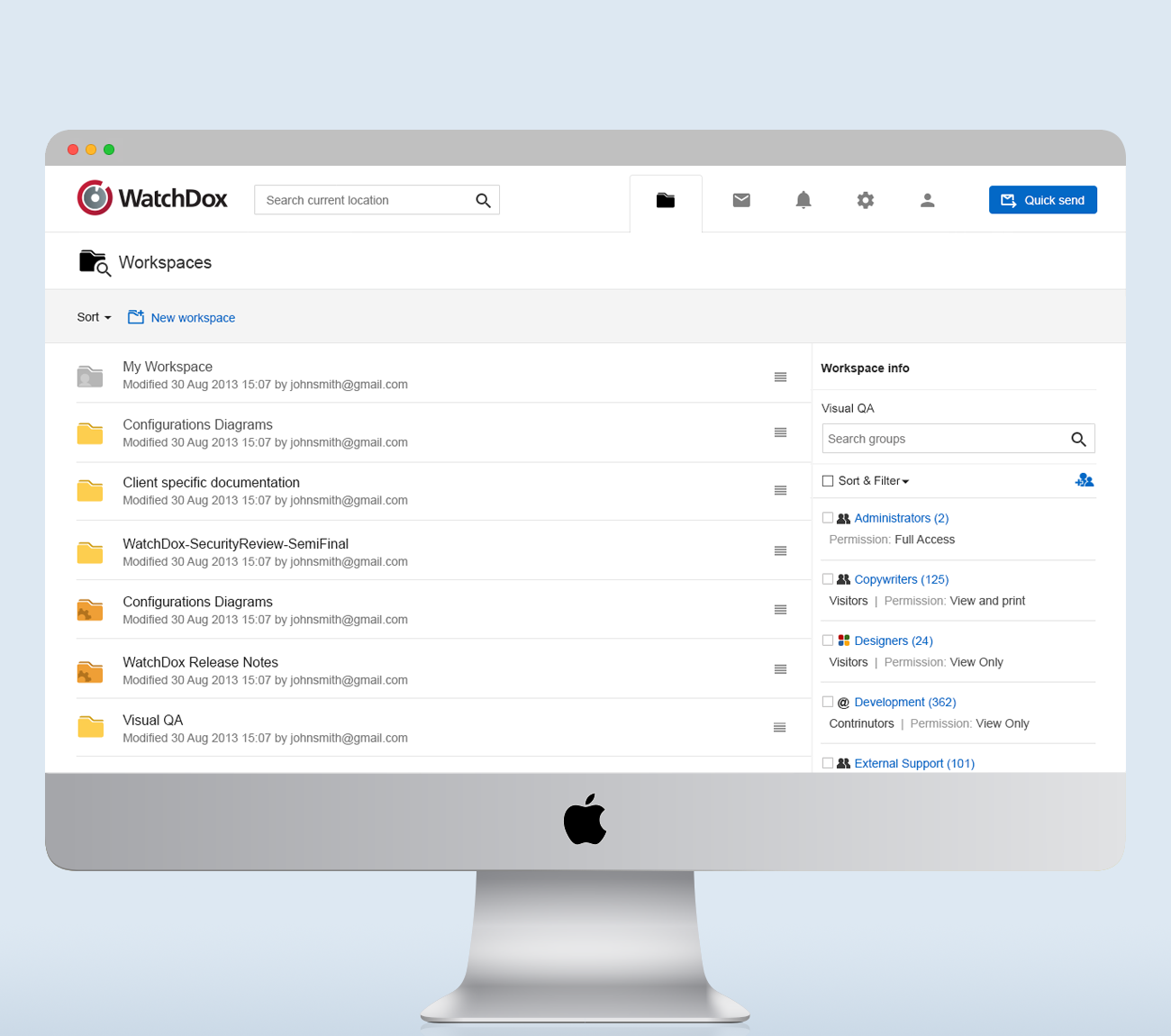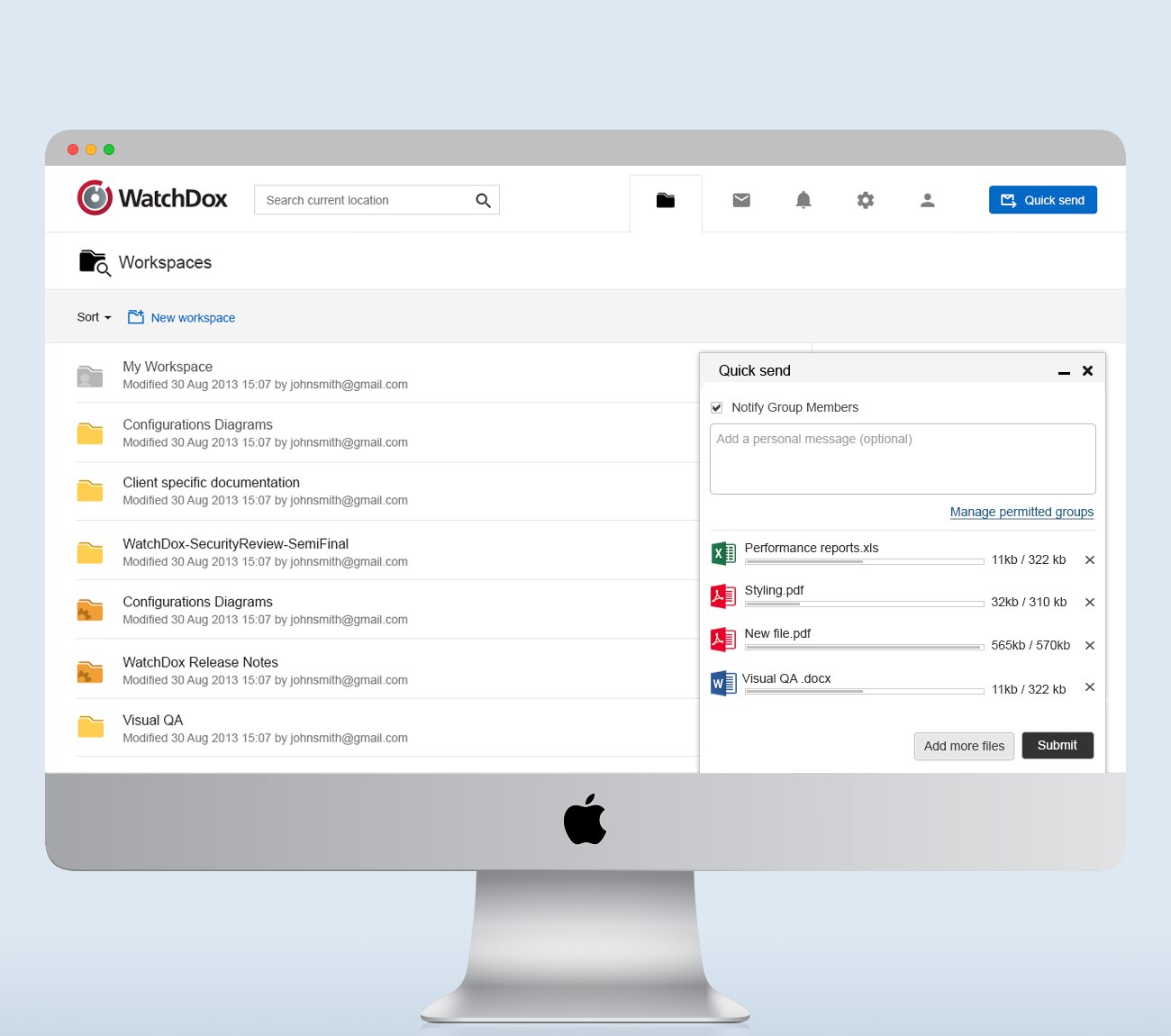WATCHDOX
WatchDox enables enterprises to securely share and collaborate their sensitive data. After having served Fortune 500 companies for several years, Watchdox was acquired by Blackberry.
DETAILS
| Years: | 2012-2014 |
| My title: | Senior UX designer |
| Responsibilities: | UX, UI, research |
THE CHALLENGE
KEEPING SENSITIVE DATA SAFE
When I joined Watchdox, it had been around for several years and had a strong customer base. While technically
the product was working good, it had been planned and designed by engineers, the user experience was clumsy and
very hard to comprehend. Managing large numbers of files is not an easy task, especially on an organizational level
with many people using these files. Add to that a wide variety of security features and suddenly file sharing becomes
far from intuitive.
Since our Fortune 500 clients used a wide variety of devices, we had to make sure to support this. In order to assure security, we developed native
applications for Web, Mac, PC, iOS, and Android. Creating a similar experience while using native UI components on so many different devices is
not an easy task. Recognizing when to use native elements or when to override these to create a homogeneous experience was one of the many
challenges we faced.
APPROACH
SECURED FILE SHARING MADE EASY
The most obvious task, when I joined, was to create an intuitive user interface and to simplify the user experience of the product.
Looking at the complexity of the security features it became obvious that something was not working well. Since security was
our flagship feature, I knew that that would need good research and immediate attention.
Since the product had a large userbase, transitioning them to a complete new experience was something that we could not take lightly as well.
Therefore, a smooth onboarding was set as an additional prime goal.
THE RESULT
HAPPY CUSTOMERS AND AN EXIT
The redesigned product was defined, designed, and developed across multiple platforms—Web, PC, Mac, iOS, and Android—each featuring a dedicated application with native UI elements. Grounded in research on actual customer needs, I streamlined one of the product’s most complex features: security settings. What was once a dense, intricate page filled with options was simplified into three intuitive dropdown menus with predefined security templates.
The enhanced user experience was validated by a leading U.S.-based consulting firm, receiving a top-tier usability score. Following the release, the UX team collaborated closely with product and marketing teams to drive market growth. Ultimately, the company and its assets were acquired by BlackBerry.





